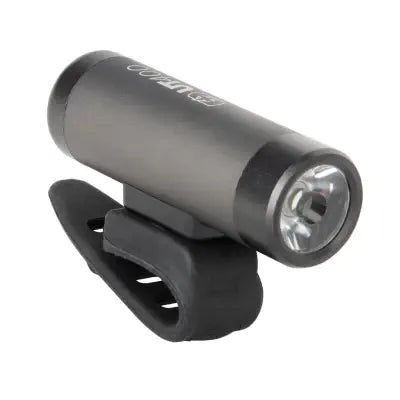
A Guide to Bike Lights
This time of year is synonymous with longer, darker nights often with bad weather thrown in too. Therefore, if you do cycle in the dark it’s worth knowing what else bike lights can give you other than the ability to see or be seen. In this guide to bike lights, we’ll talk about the mysterious lumens figures you may see quoted, IP waterproof ratings, and more.
What are Lumens?
Lumens are a standardised measurement of a light’s output, or in other words: how bright it is. Rear lights are usually between 5 and 150 lumens. Front lights can be anything from 10 up to thousands of lumens. Rear lights don’t need to be as bright as front lights. There is no need to penetrate the darkness and light up the road. They just need to be bright enough to be seen.
For comparison, the full moon on a clear night is about 1 lumen, a smartphone’s backlight is around 20 lumens, and a standard car headlight is around 1200 lumens.
Paul Prince, eCycleDirect
Many lights specify a maximum lumen output but this is in fact maybe on flashing mode only. If you’re going to use a constant mode, bear in mind that it may output slightly less light than advertised.
What is Lux?
You may have also come across Lux. This measurement takes into account the surface area on which the light is distributed or spread. The light’s density. Several major light brands may use Lux as it is an accurate measurement for determining what we actually see in front of us. However, whilst lumen is the most common measurement of light output, it doesn’t always equal the light quality in a real world setting. Lumens therefore should be primarily used as a comparison. Higher Lumens = Brighter Light.
One Lux = One Lumen per square metre
Green Business Light
If you’re riding on unlit roads, you will need a front light that’s a minimum of 600 lumens. When cycling on the road, it’s important to position a light so that it will not blind oncoming traffic. For your safety and theirs. To avoid this, look for a light with a narrow beam pattern that you can tilt downwards.

Some lights are designed for off-road cycling, and those are the ones that you should avoid using on the road. They are designed to flood the area ahead of you with light. However, many of these lights do allow you to dial their brightness down. So there’s no need to compromise or get another set if you’re going to be riding on and off-road. If you are going to be riding off-road at night, look for lights with an output above 1000 lumens. The greater penetration they have in the dark is required.
Performance
Light performance can drop as the battery runs out. Higher lumens means more power required so the drain on your battery will be greater. Therefore it’s always worth buying a light with a capacity that’s longer than your average ride time at the output you need. High lumens + big batteries are the most expensive lights.
If your battery is running low (lights usually have an LED indicator of battery level), switch to a flashing or eco mode where possible. Don’t use a flashing mode on unlit roads or off-road, but in built-up areas it’s ideal and can help to make more visible.
Further Reading
Brackets and Mounts
No matter where you ride, your light needs a robust mount. Some mounts can slip if you’re riding over bumps. Attempting to adjust them whilst riding isn’t easy and can obviously be dangerous.
Many rear lights are secured to your bike’s seatpost or frame with a simple silicone wrap-around strap, making them easy to attach and remove.
Front lights also feature straps, but you’ll also see some models with clamp mounts. These are a lot more rugged and are able to withstand bumpy trails and the weight of the light with ease. They’ll usually require basic tools to assemble so they aren’t as quick to fit and remove, but will often feature a quick release for easy removal of the light leaving the mount in place. We’d recommend considering a light with a silicone strap mount if you’re going to be sharing a light between your bikes.


Waterproof Rating
Riding in the UK means you are definitely going to need a set of bike lights with a decent waterproof rating. Waterproof ratings on lights vary considerably. 100% waterproof lights are rare. How resistant lights are to water ingress will vary so it’s worth knowing what those IP letters and numbers mean.
Waterproof ratings begin with ‘IP’, which stands for Ingress Protection. It will then be followed by two numbers – the first number is the protection from solid particles (dust), whereas the second number is the protection from liquid.
We don’t recommend buying a light that’s less than IP64. A light rated at IP63 will allow water spray in at an angle, whereas a light rated at IP64 is capable of resisting spray from any direction. As you continue up the ratings, the waterproof protection is even greater: IP67, for example, can withstand immersion up to 1 metre, which should be more than enough for any cyclists’ needs no matter how wet and muddy your ride is!
